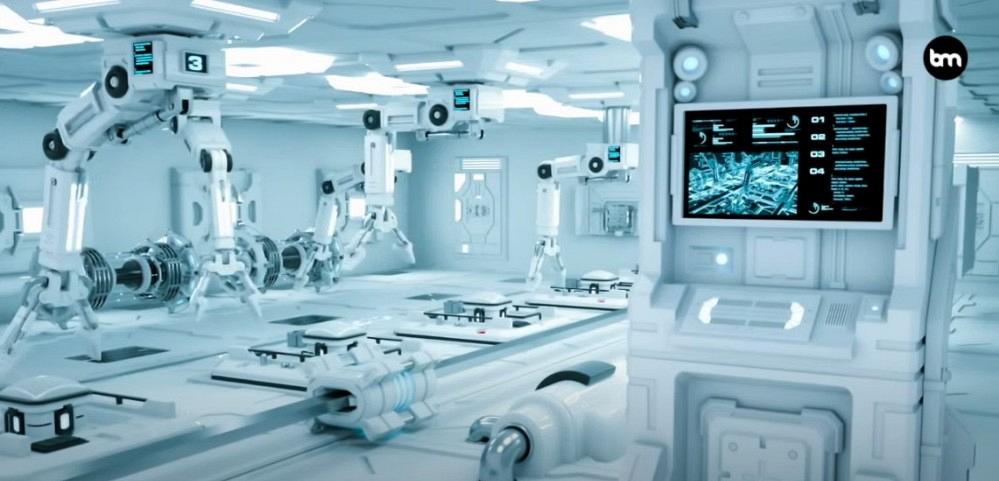Editor-in-Chief
- FMA
- The Fabricator
- FABTECH
- Canadian Metalworking
Our Publications
Categories
- Additive Manufacturing
- Aluminum Welding
- Arc Welding
- Assembly and Joining
- Automation and Robotics
- Bending and Forming
- Consumables
- Cutting and Weld Prep
- Electric Vehicles
- En Español
- Finishing
- Hydroforming
- Laser Cutting
- Laser Welding
- Machining
- Manufacturing Software
- Materials Handling
- Metals/Materials
- Oxyfuel Cutting
- Plasma Cutting
- Power Tools
- Punching and Other Holemaking
- Roll Forming
- Safety
- Sawing
- Shearing
- Shop Management
- Testing and Measuring
- Tube and Pipe Fabrication
- Tube and Pipe Production
- Waterjet Cutting
Industry Directory
Webcasts
Podcasts
FAB 40
Advertise
Subscribe
Account Login
Search
Learn about the future of manufacturing in five minutes
Technology futurist and social media influencer Bernard Marr weighs in on the seven biggest manufacturing trends
- By Don Nelson
- January 28, 2022
- Article
- Additive Manufacturing
Bernard Marr is an internationally recognized futurist and strategic business and technology adviser to governments and companies. Through his 22-year-old consulting firm, Bernard Marr & Co., he helps organizations improve their business performance; get maximum leverage from their gathered data; and understand the implications of new technologies such as AI (artificial intelligence), blockchains, and the Industrial Internet of Things.
Marr has written 15 books, contributes regularly to Forbes, and has more than 2 million social media followers and 1 million newsletter subscribers. He also uploads videos regularly to YouTube.
A recent one is titled “The 7 Biggest Future Trends In Manufacturing.” Here’s the trends Marr identifies during the five-minute video:
1. The Industrial Internet of Things. Interconnected sensing devices collect and transmit data about the performance of individual machines and related equipment. The data then are analyzed in real time, triggering actions that optimize processes.
2. Predictive maintenance. AI is used to analyze sensor-collected data to detect failure patterns in machinery and components and inform manufacturers when machines and parts will likely fail.
3. Digital twins. Manufacturers produce a simulated, digital representation of machines, products, factories and factory layouts, and supply chains. Marr predicts that in 2022 up to 70% of new manufacturers will be using digital twins in the planning and ongoing optimization of their processes.
4. Automation and dark factories. There will be continued growth of automation and adoption of dark factories. These fully operational factories run 24/7 with no direct, onsite human intervention.
5. Robots and cobots. More intelligent robots, or cobots, will work hand-in-gripper with humans. Cobots fitted with sensors that act like eyes and ears will ensure a safe environment for humans and cobots to work side by side.
6. 3D printing. Additive manufacturing, usually called 3D printing, allows manufacturers to make shapes and forms they can’t with other methods. AM also lets a manufacturer personalize one product after another with no loss of production efficiency.
7. More sustainable products. There’s a need to address climate change and sustainability. Consumers are much more aware of the environmental impacts of producing goods. Regulations will be enacted that require manufacturers to move away from selling products that can’t be repaired and toward producing repairable ones.
“The 7 Biggest Future Trends In Manufacturing” can be viewed at Bernard Marr’s YouTube channel.
About the Author

Don Nelson
2135 Point Blvd.
Elgin, IL 60123
(815)-227-8248
About the Publication
- Podcasting
- Podcast:
- The Fabricator Podcast
- Published:
- 04/16/2024
- Running Time:
- 63:29
In this episode of The Fabricator Podcast, Caleb Chamberlain, co-founder and CEO of OSH Cut, discusses his company’s...
- Trending Articles
- Industry Events
16th Annual Safety Conference
- April 30 - May 1, 2024
- Elgin,
Pipe and Tube Conference
- May 21 - 22, 2024
- Omaha, NE
World-Class Roll Forming Workshop
- June 5 - 6, 2024
- Louisville, KY
Advanced Laser Application Workshop
- June 25 - 27, 2024
- Novi, MI




























